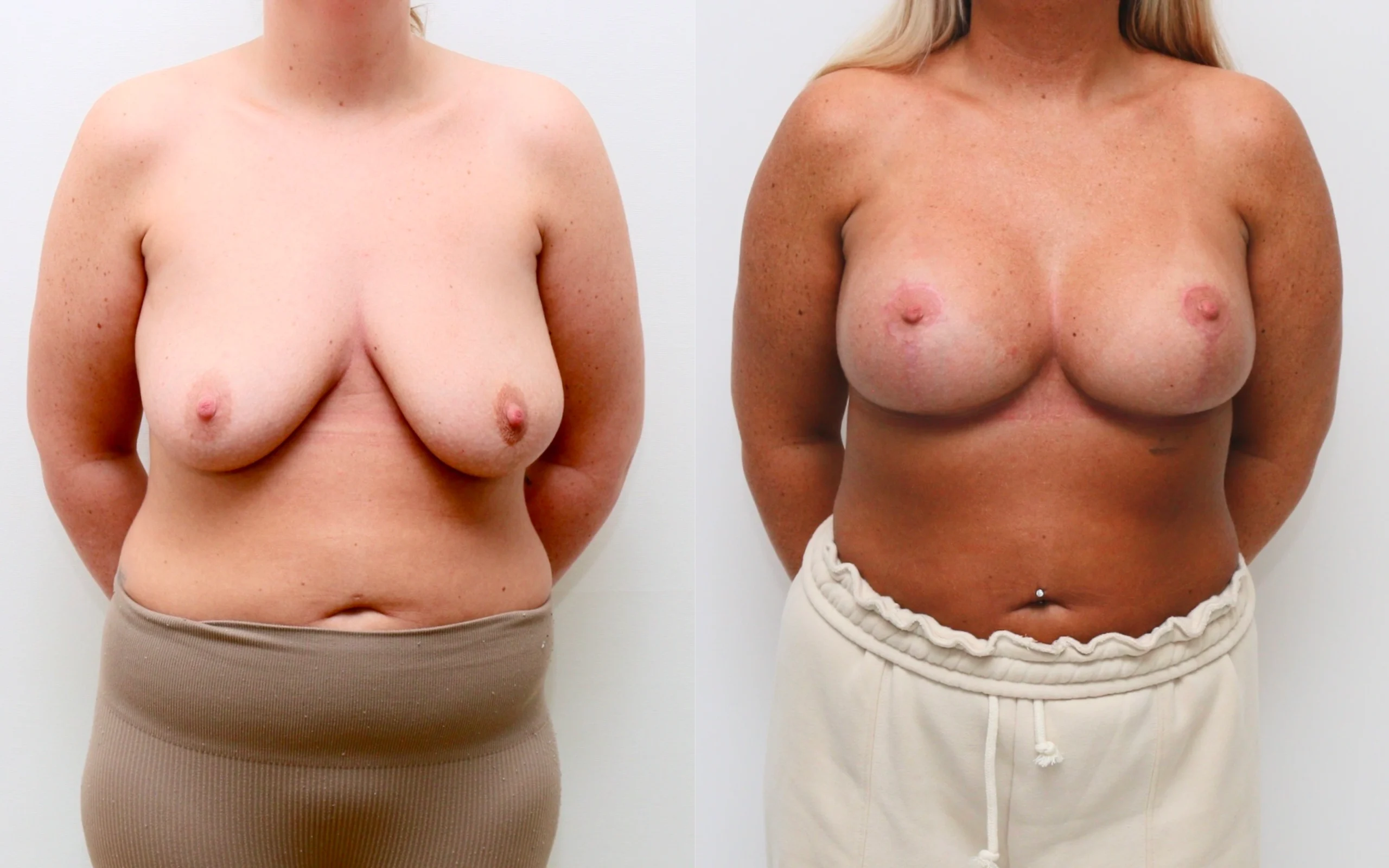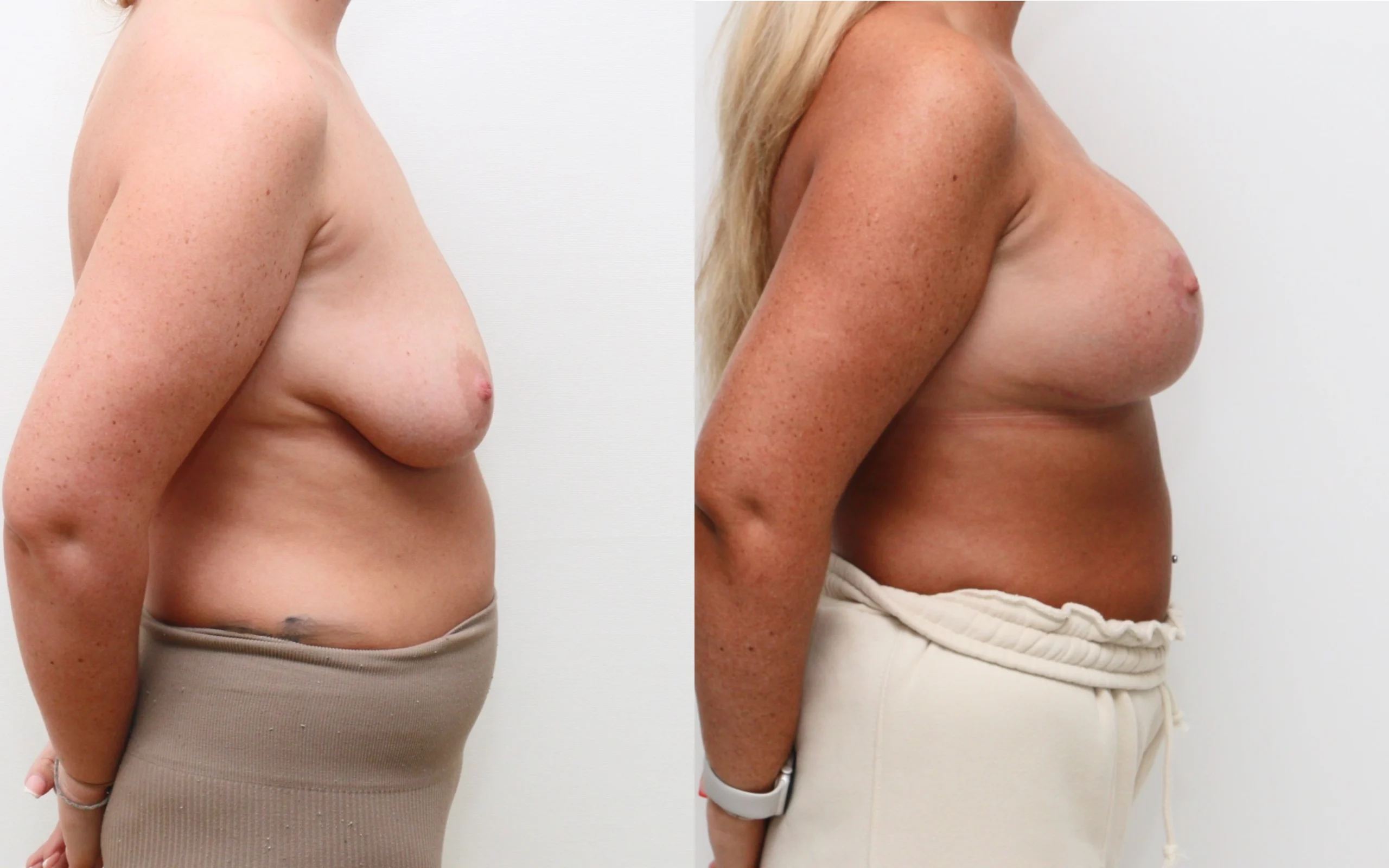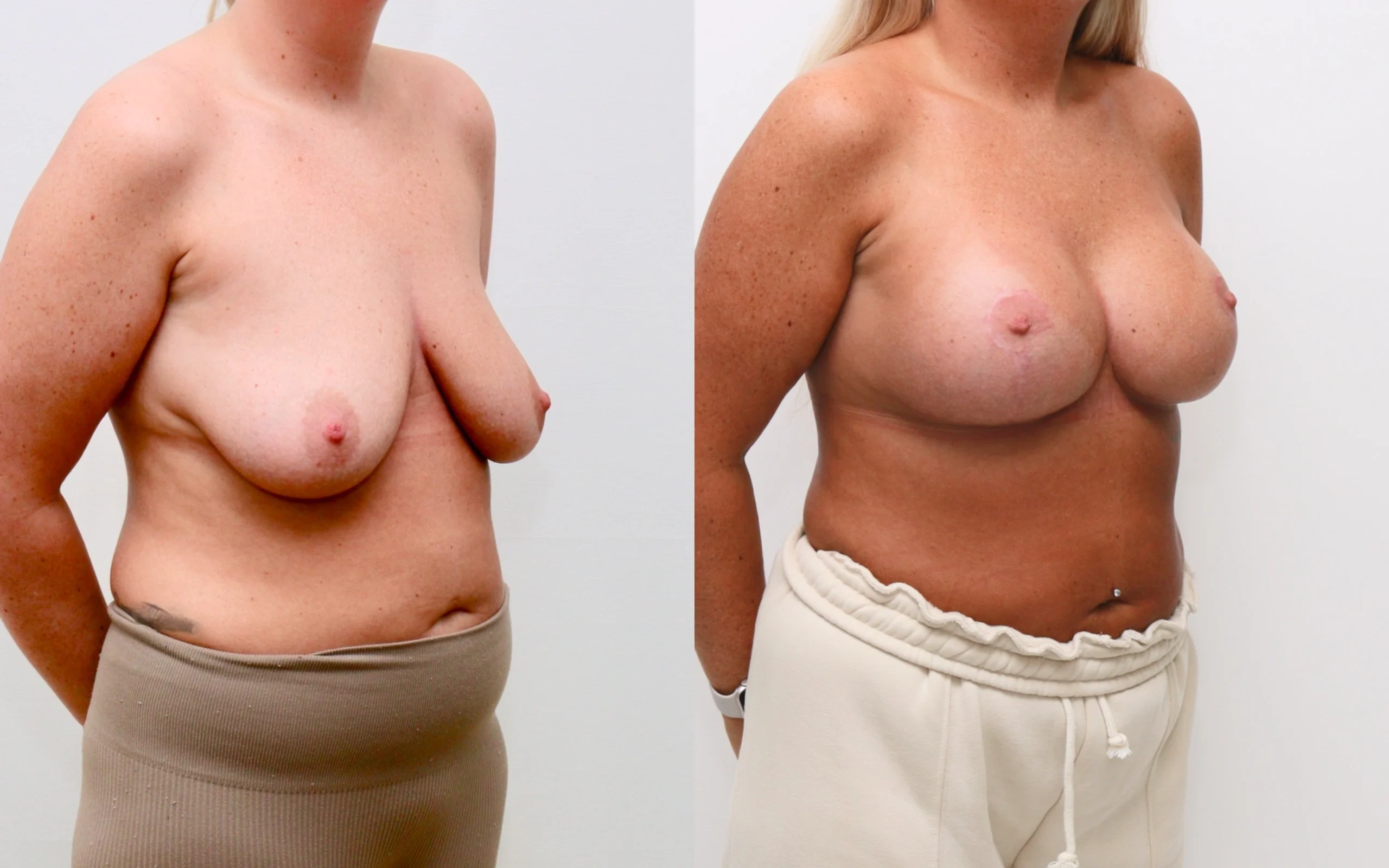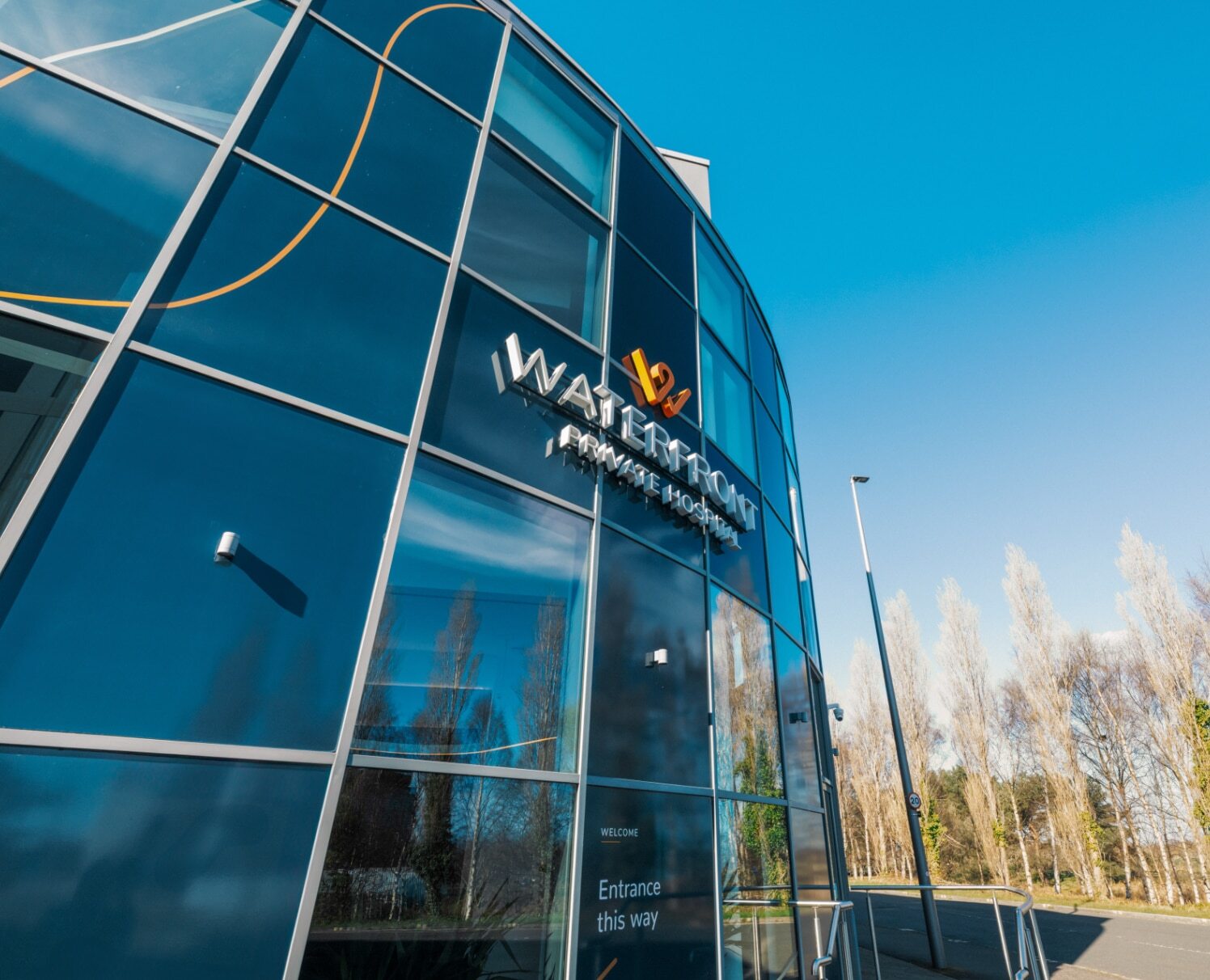Breast Uplift with Implants for Enhanced Shape in Edinburgh
Seeking to restore breast shape and volume? Our breast uplift with implants in Edinburgh combines surgical lifting with enhancement from £10,000. This advanced procedure addresses loss of firmness whilst adding fullness, performed by GMC Specialist Register surgeons at Waterfront Hospital.
Whether addressing changes after pregnancy or seeking rejuvenation, we offer both single-stage and two-stage surgical approaches throughout Scotland, providing transparent guidance about this sophisticated combination procedure that delivers comprehensive breast transformation.

Contents
Highly Recommended
I’m so grateful to Dr Omar and Dr Awf Quaba for their 100% kindness, professionalism and attention to my health at every stage, from pre-consultation to the final review. I’m delighted with the outcome. The hospital is pristine and welcoming, and their team and nurses made me feel safe, informed and comfortable every step of the way. Highly recommended!
Lina H
Nov 24
Overview
Breast uplift and implants
- TYPE OF ANAESTHETIC
General - LENGTH OF SURGERY
2-3 Hours - HOSPITAL STAY
Day surgery - RECOVERY
1-2 weeks off work, 6 weeks before strenuous exercise
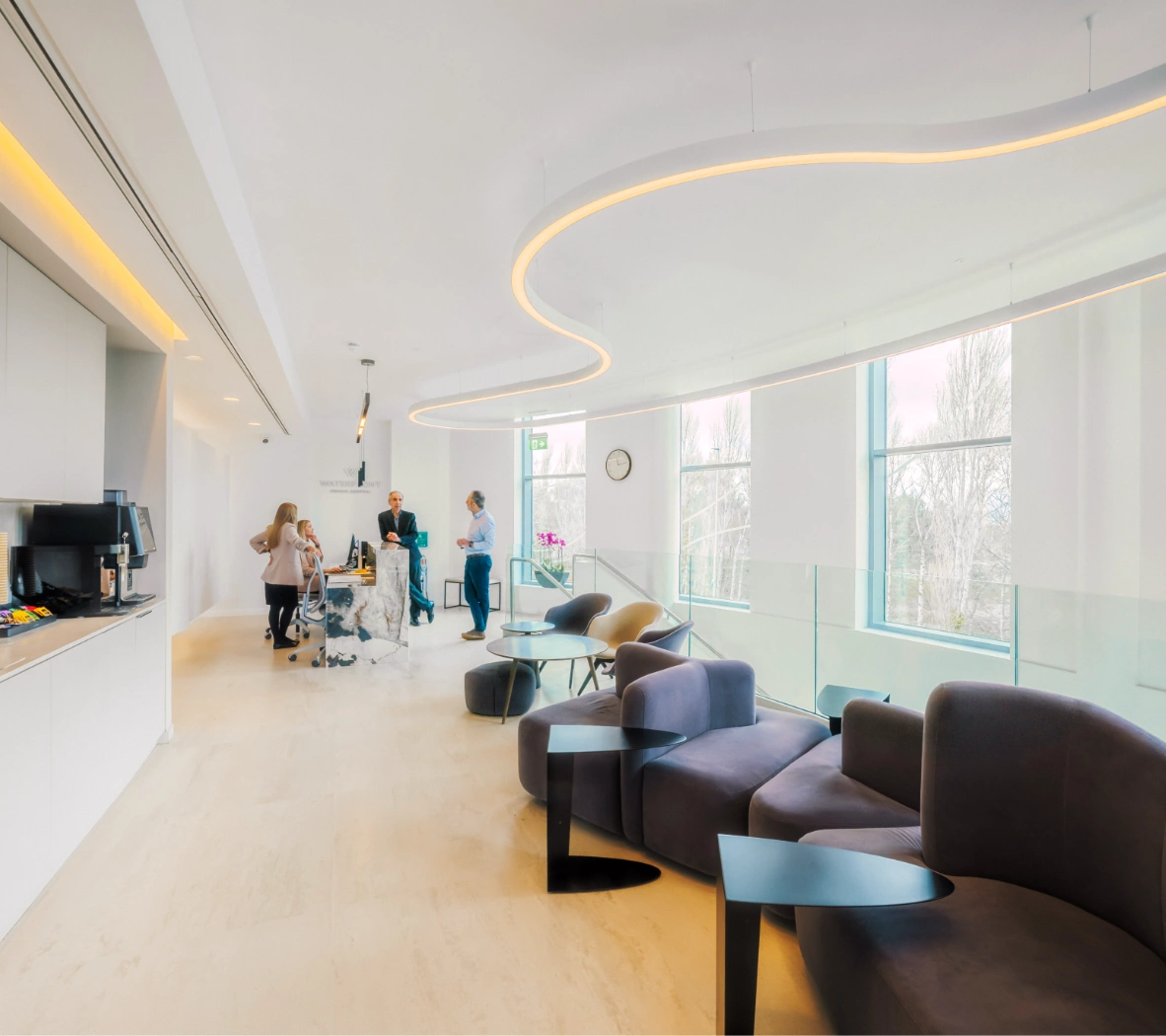
What the procedure involves
At Waterfront Private Hospital, we take a personalised approach to breast uplift with implants. Here’s what to expect:
1. Consultation and Personalised Plan
•During your consultation, we’ll assess your goals and breast anatomy to determine whether this procedure is right for you.
•We’ll also determine whether a one-stage or two-stage approach is best for you.
2. Carefully Planned Incisions
•Depending on your needs, we’ll choose the best incision pattern around the areola, a lollipop shape, or an anchor shape. The majority of incisions are anchor-shaped.
3. Lifting and Reshaping
•We’ll remove extra skin, reposition the nipple and areola, and reshape the breast for a firmer, lifted appearance.
4. Implant Placement
•Breast implants can be placed above or below the muscle, depending on what works best for your body and your desired results.
Challenges of Breast Uplift with Implants
This is a more advanced procedure, and it’s important to understand the challenges:
•Only for Lighter Breasts:
Women with lighter breasts and moderate sagging are the best candidates. If your breasts are too heavy or very saggy, the procedure may not give the best long-term results.
•Higher Revision Rates:
Because this is a complex surgery, there’s a higher chance of needing adjustments or corrections later compared to simpler procedures.
•Long-Term Maintenance:
Implants add weight to the breasts, which can cause sagging to return over time, especially if the skin is already weak.
One-Stage vs. Two-Stage Surgery
We offer two approaches for this surgery:
One-Stage Surgery
Pros:
•You only need one operation and recovery period.
•You get the final results with one procedure.
Cons:
•There’s a higher risk of complications, like implant shifting or uneven results.
•It’s harder to balance lifting the breasts and adding volume at the same time.
Two-Stage Surgery
Pros:
•Doing the uplift first allows your breasts to settle before adding implants.
•It reduces the risk of complications and can lead to more stable results.
Cons:
•You’ll need two surgeries and recoveries.
•It takes longer to see the final results.
We’ll discuss which option is better for you during your consultation.
Benefits and What You Can Expect
Improved Physical Appearance
•A fuller, lifted breast shape.
•Better balance and symmetry.
Boost in Confidence
•Many women feel more comfortable and confident after the procedure.
Lifestyle Benefits
•More clothing options and comfort during physical activities.
Long-Term Results
•While results are long-lasting, maintaining a stable weight helps keep your new shape.
Before and after breast uplift with implants
Ideal Candidates
You may be a good candidate if:
•Your breasts are lighter and have moderate sagging.
•You are in good health and have realistic expectations.
•You are close to your ideal body weight.
•You’ve completed your family or don’t plan on having children soon.
Risks to Be Aware Of
All surgeries carry risks, and we’ll discuss these in detail during your consultation. Key risks include:
•Higher revision rates compared to other procedures.
•Implant complications like shifting, hardening, or rupture.
•Sagging may return over time due to the weight of the implants.
•Scars, delayed healing, or uneven results.
At Waterfront, your safety is our top priority. We’ll guide you through every step of the process to minimise risks and achieve the best results.
Aftercare and recovery
After surgery, you may have some swelling and discomfort, which usually improves within a few weeks. We’ll provide detailed instructions, which include:
•Wearing a Support Bra: To help maintain your new shape and support the implants.
•Avoiding Strenuous Activities: No heavy lifting or exercise for six weeks.
•Follow-Up Care: Regular appointments to check your healing and results.

Frequently Asked Questions
How much does a breast uplift with implants cost?
The cost for a single-stage breast uplift with implants at Waterfront Private Hospital starts at around £10,000. This price covers the surgical procedure, anaesthesia, and aftercare. If the procedure is performed in two stages—uplift first, followed by implant placement—the overall cost is higher due to the additional surgery and recovery time. Financing options are available to help make the procedure more accessible.
How long do the results of a breast uplift with implants last?
The results of a breast uplift with implants can be long-lasting, but they are not permanent. Factors like ageing, gravity, weight changes, and lifestyle choices can affect the longevity of the outcome. Implants typically need to be replaced or revised after 10–15 years, and some patients may experience changes in breast shape over time due to the natural ageing process.
What is the recovery like after a breast uplift with implants?
Recovery varies for each patient, but most patients experience swelling, bruising, and mild discomfort for the first few weeks. You will need to wear a supportive bra to help with healing and avoid heavy lifting or strenuous activities for about six weeks. Most patients feel ready to return to light daily activities within 1–2 weeks and normal activities within 4–6 weeks. Follow-up appointments will be scheduled to monitor your progress.
Will there be visible scars after the procedure?
Scars are a natural part of any surgery. With a breast uplift and implants, the incisions are carefully placed to minimize visibility, such as around the areola or along the natural folds of the breast. Over time, scars typically fade and become less noticeable. Your surgeon will advise you on how to care for your incisions to promote healing and minimize scarring.
Can I breastfeed after a breast uplift with implants?
Breastfeeding may still be possible after a breast uplift with implants, but it depends on the specific techniques used and individual anatomy. If you plan to breastfeed in the future, it’s important to discuss this with your surgeon during your consultation so they can tailor the procedure to preserve as much breast function as possible.
How do I choose the right implant size and shape?
Choosing the right implant size and shape is a collaborative process between you and your surgeon. During your consultation, your surgeon will evaluate your anatomy, discuss your aesthetic goals, and guide you toward options that suit your body type. Silicone implants are commonly used as they provide a natural feel and appearance. When recommending implants, your surgeon will also consider factors such as your chest width, breast tissue, and lifestyle.
What are the risks associated with a breast uplift with implants?
All surgeries carry some risks. Specific risks for this procedure include infection, changes in sensation, implant-related issues such as rupture or capsular contracture (hardening around the implant), and the possibility of needing revision surgery. Given the complexity of combining a lift with implants, revision is also more likely than standalone procedures. Your surgeon will discuss all potential risks in detail during your consultation.
Is a breast uplift with implants suitable for everyone?
This procedure is best suited for women with lighter breasts and moderate sagging. Heavier breasts or those with significant sagging may not achieve the desired results and may be better suited to alternative treatments or a staged approach. Candidates should be in good health, non-smokers, and have realistic expectations. A consultation with your surgeon will determine if this procedure is right for you.
What is the difference between a single-stage and two-stage procedure?
A single-stage procedure combines breast uplift and implant placement in one surgery. It is more convenient, involves a single recovery period, and provides immediate results. However, it is more prone to complications, such as implant displacement or poor healing. A two-stage procedure separates the uplift and implant placement into two surgeries, allowing the breasts to settle before implants are added. This approach reduces risks and can improve long-term results, but it requires a longer overall process and additional costs.
How soon after pregnancy can I have a breast uplift with implants?
It is recommended to wait at least six months after completing breastfeeding or, if you are not breastfeeding, six months after giving birth. This waiting period allows your breasts to stabilize in size and shape, ensuring the best possible outcome from the surgery.
What should I consider when choosing a surgeon for this procedure?
Choosing a surgeon is one of the most important decisions you’ll make. Look for a board-certified plastic surgeon with extensive experience in breast surgery, particularly combined uplift and implant procedures. Review their before-and-after photos to understand their work and ensure you feel comfortable and confident during your consultation. At Waterfront Private Hospital, our expert surgeons are committed to providing personalised care and delivering natural, long-lasting results.
Author
Dr. Omar Quaba, MBBChir, FRCS (Plast), GMC 4586300, is a Consultant Plastic Surgeon with over 20 years of experience in plastic surgery. Based at Waterfront Private Hospital in Edinburgh, he is fully accredited on the GMC Specialist Register and specialises in advanced cosmetic procedures. Full member of BAAPS.
